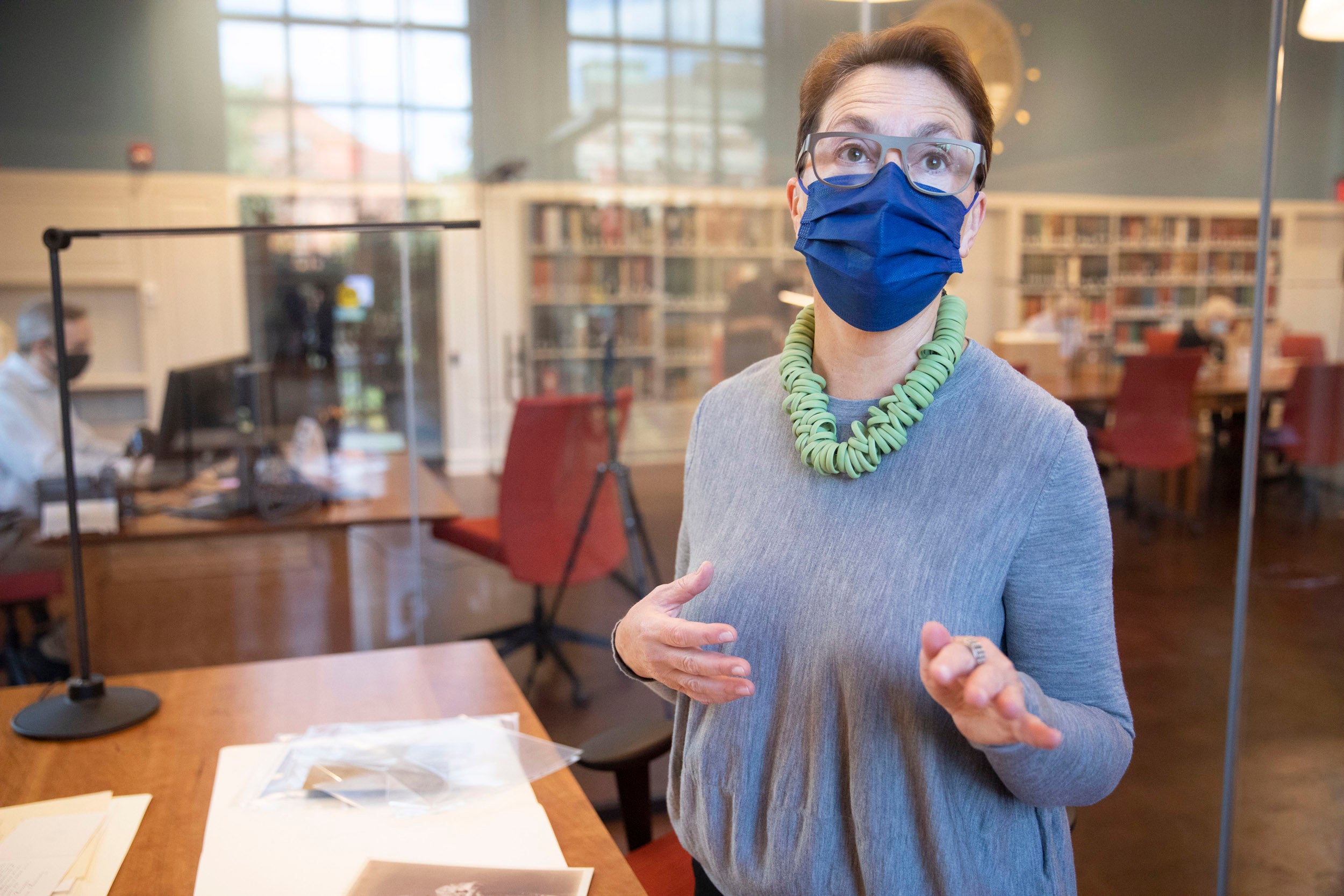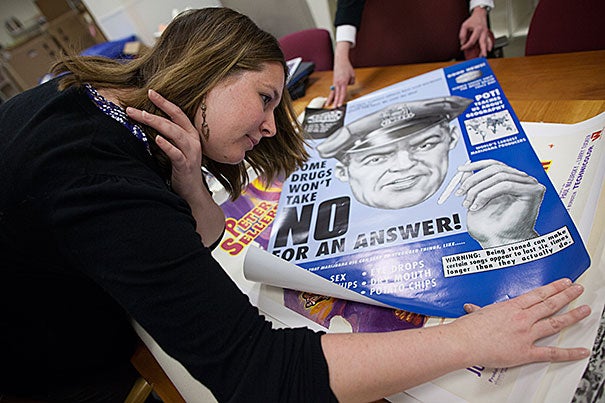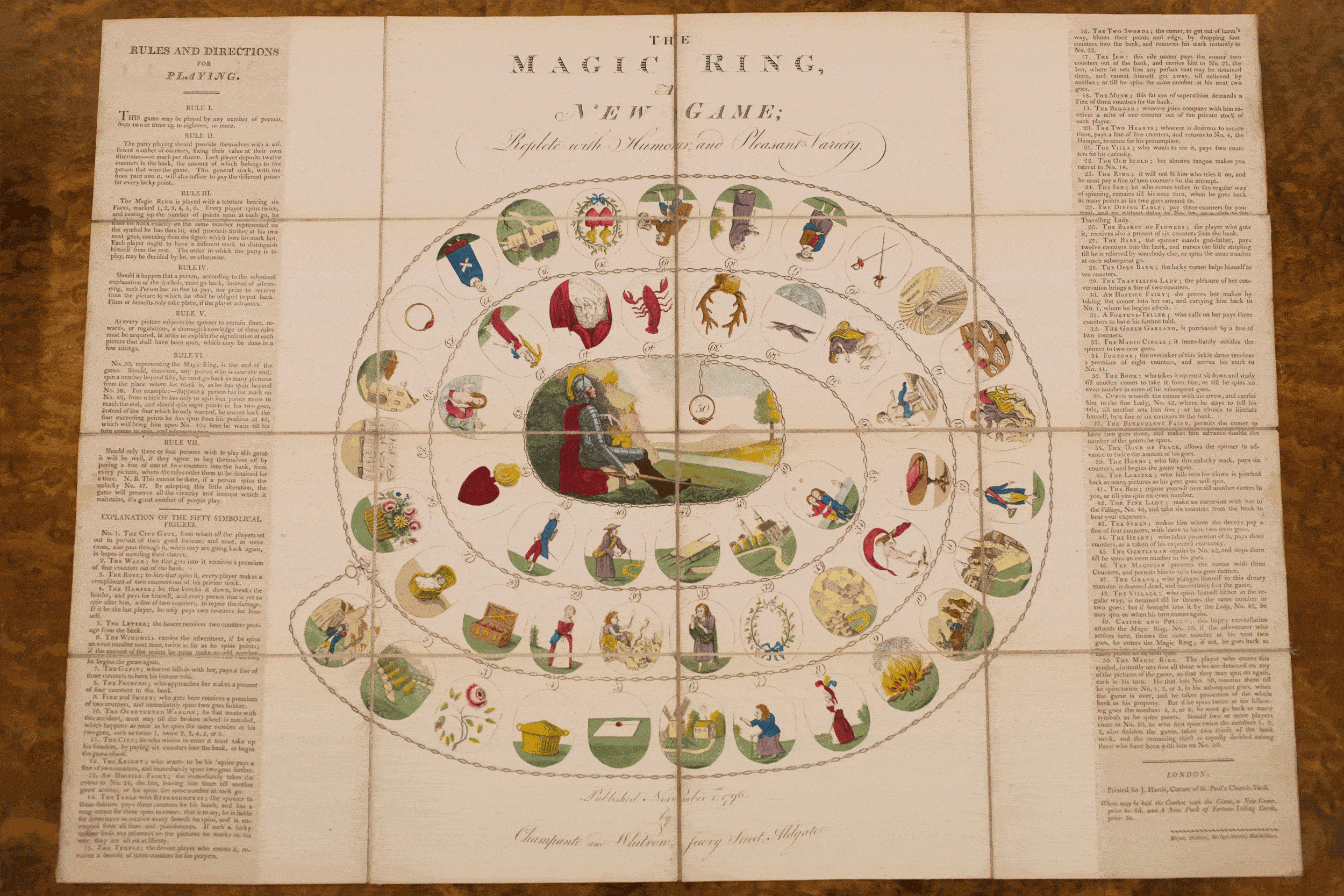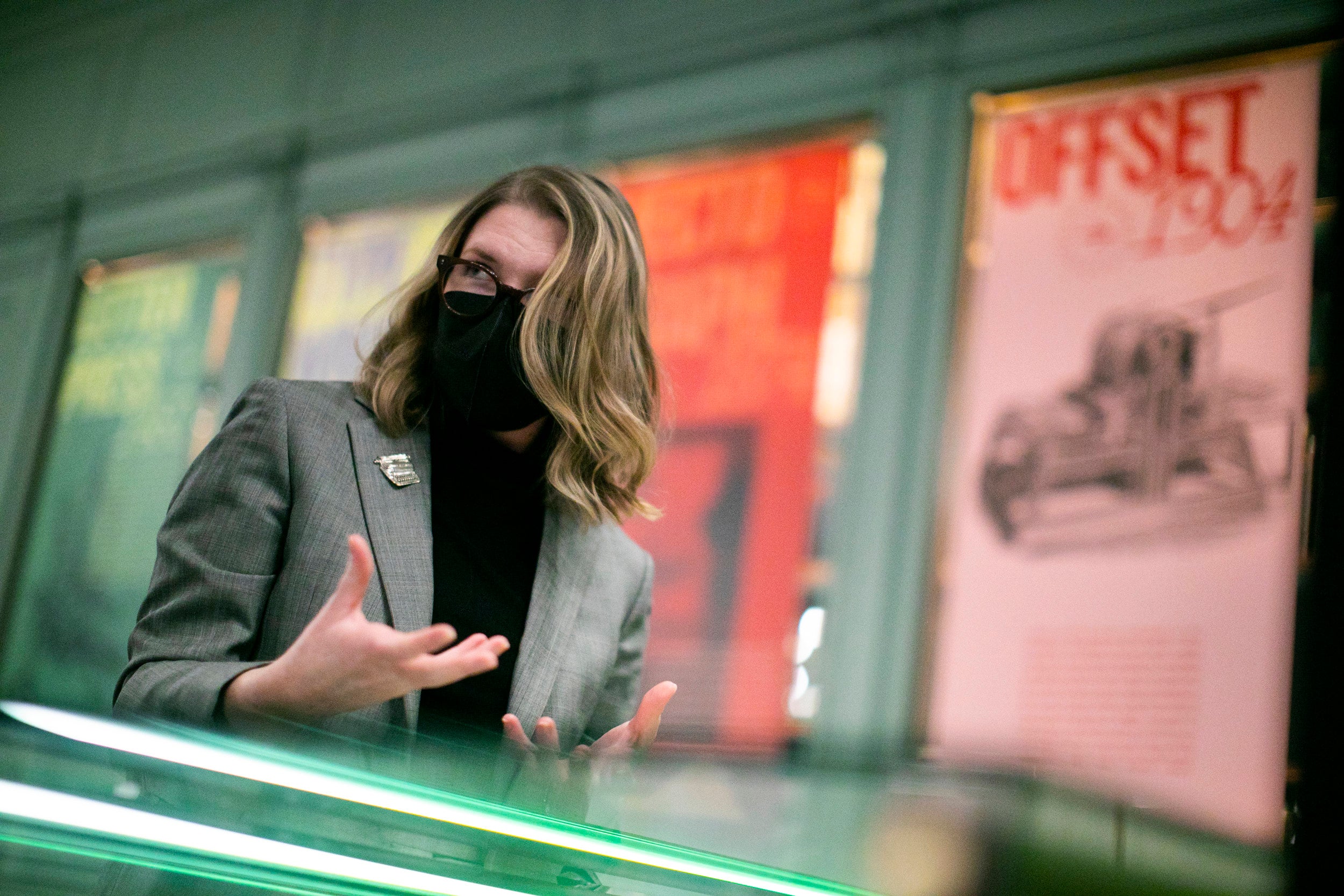
“The idea is to tell the story of self-publishing as more of an enduring phenomenon than most people usually think of,” said Christine Jacobson, curator of a Houghton Library exhibition on do-it-yourself publishing.
Photos by Stephanie Mitchell/Harvard Staff Photographer
Rich history of DIY publishing
Creative people have bypassed gatekeepers for centuries to distribute ‘what they wanted to share so badly.’ They find common ground in Houghton Library exhibition.
What do you think of when you hear “self-publishing”? Authors releasing their work on Amazon? Punk rock zines from the 1990s? How about Soviet-era pornography hidden behind an adorable cat calendar? All of the above are part of Houghton Library’s new exhibition “Do It Yourself! Self-Publishing from Letterpress to LaserJet.”
The show, which runs through April, brings together a variety of material dating from as far back as the 18th century, highlighting the diversity of methods and reasons creatives have been self-publishing throughout history.
“The idea is to tell the story of self-publishing as more of an enduring phenomenon than most people usually think of,” said Christine Jacobson, the assistant curator of modern books and manuscripts.
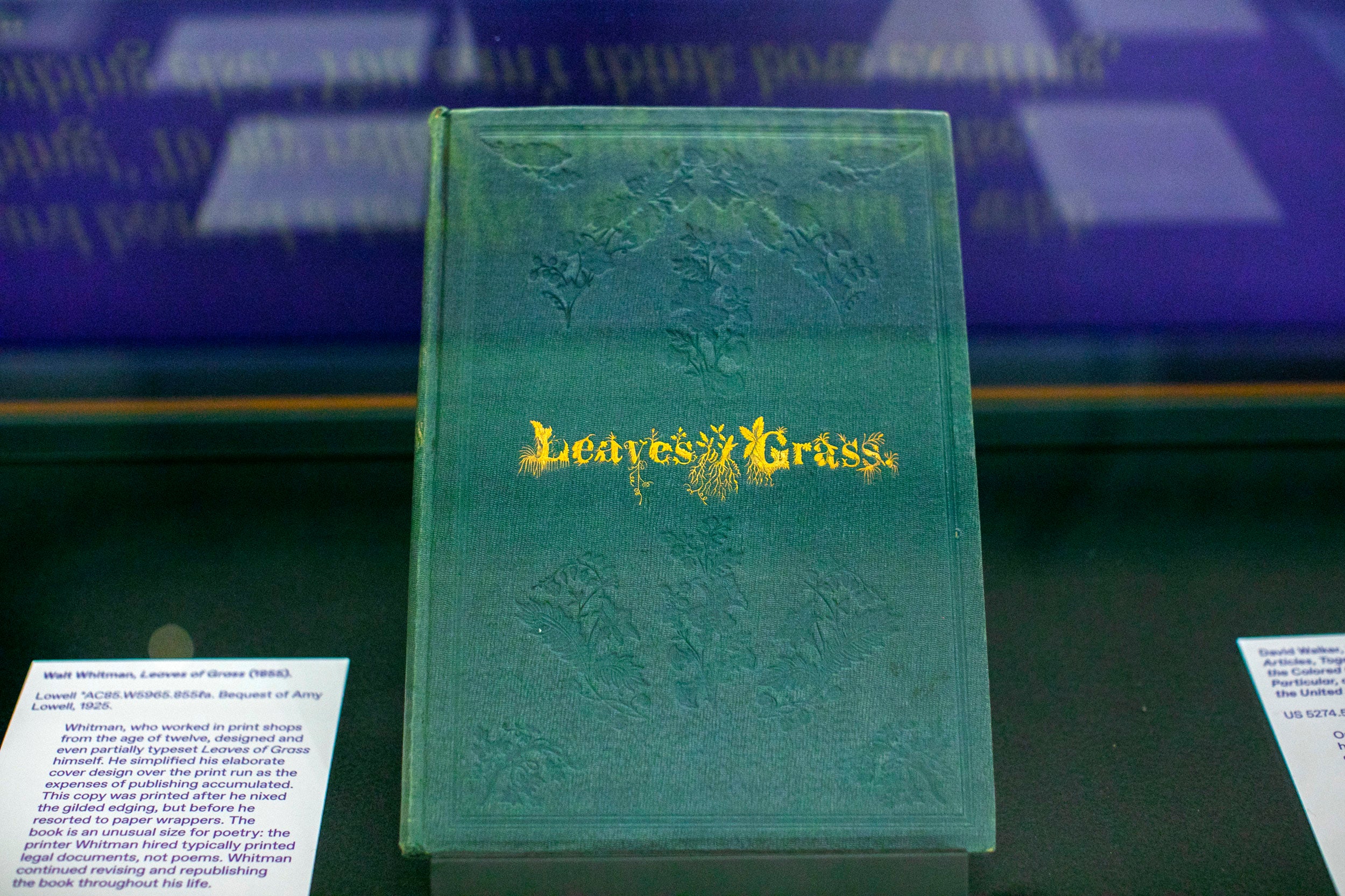
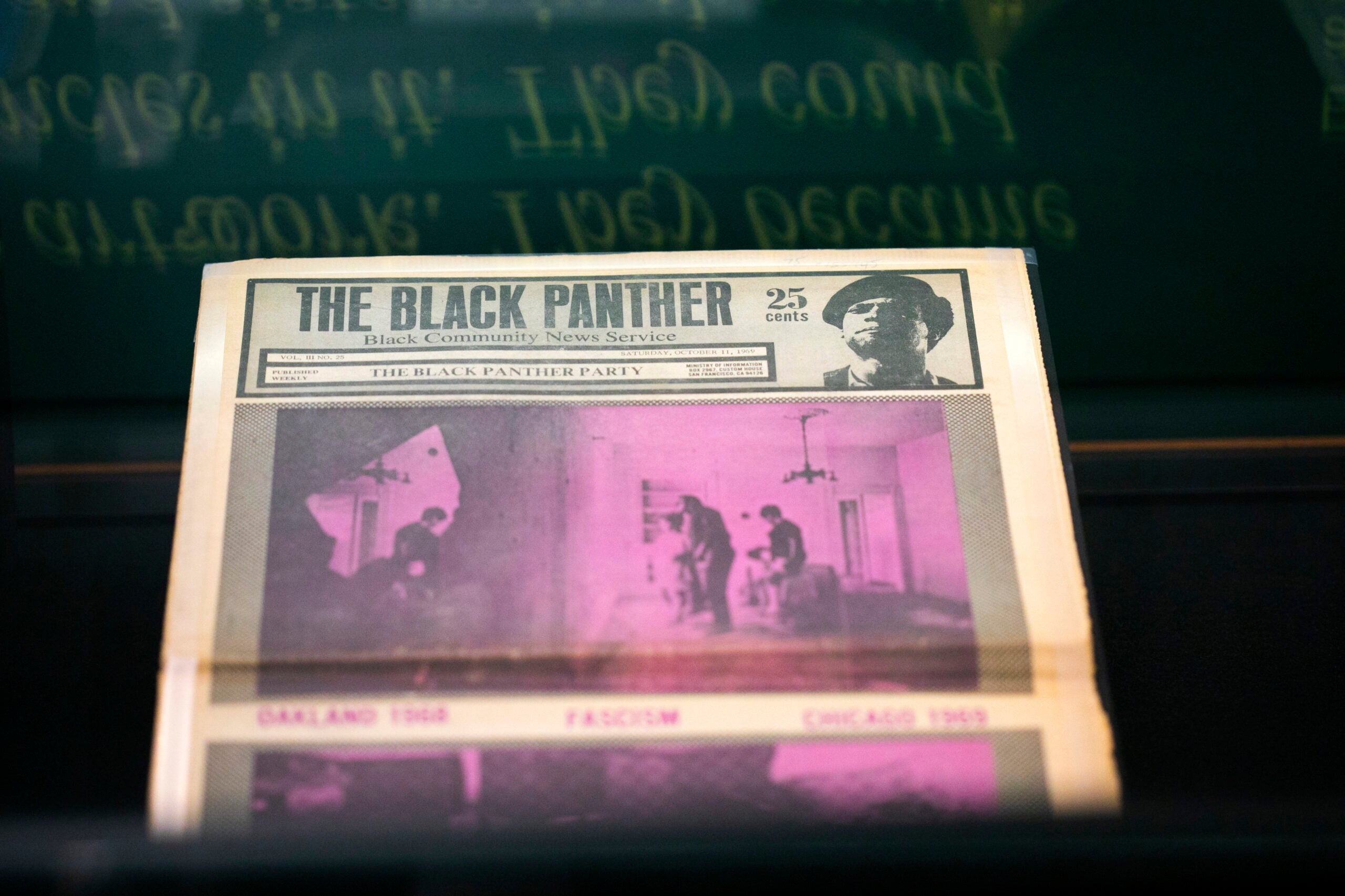
Walt Whitman’s “Leaves of Grass” and an issue of The Black Panther newspaper.
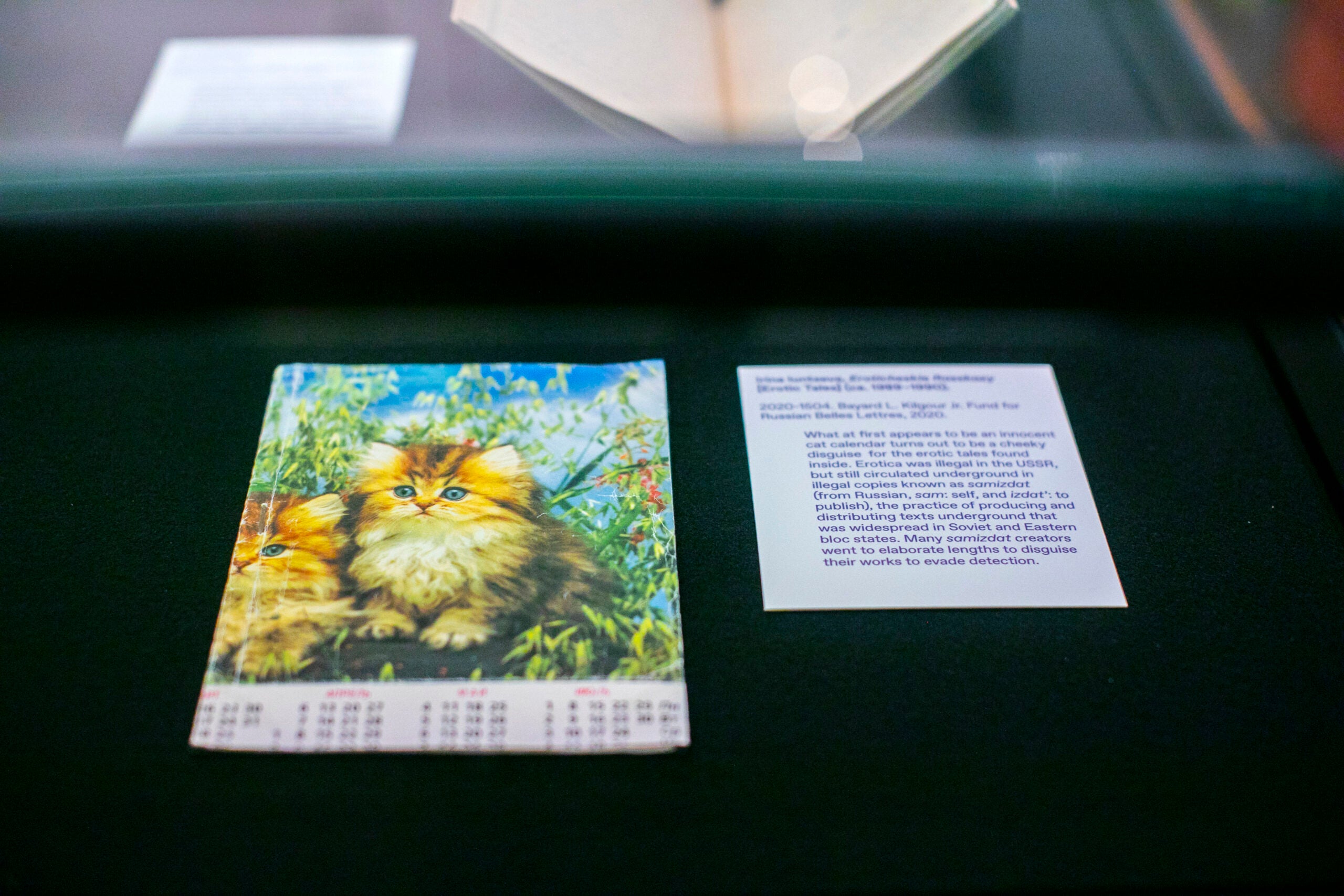
Building on a concept they came up with in 2019, Jacobson and Kristine Greive, head of teaching and learning at Houghton, have compiled works that vary from printed diaries to political pamphlets by authors both unknown and famous. They fall into rough themes — self-publishers motivated to create community, escape censorship, bypass gatekeepers, and take control of the process.
“We chose this approach not to tell a chronology of the medium, but rather to create interesting juxtapositions of things that you might not think about as related to each other, that actually do have a lot of conceptual backing in common,” Greive said.
Sci-fi zines sit alongside “Ladies Almanack,” a satirical novella from the Paris lesbian scene of the late 1920s. There is a copy of erotic samizdat — a form of political resistance in the Eastern Bloc. An innocent-looking calendar with two kittens on the front hides secret Soviet erotica.
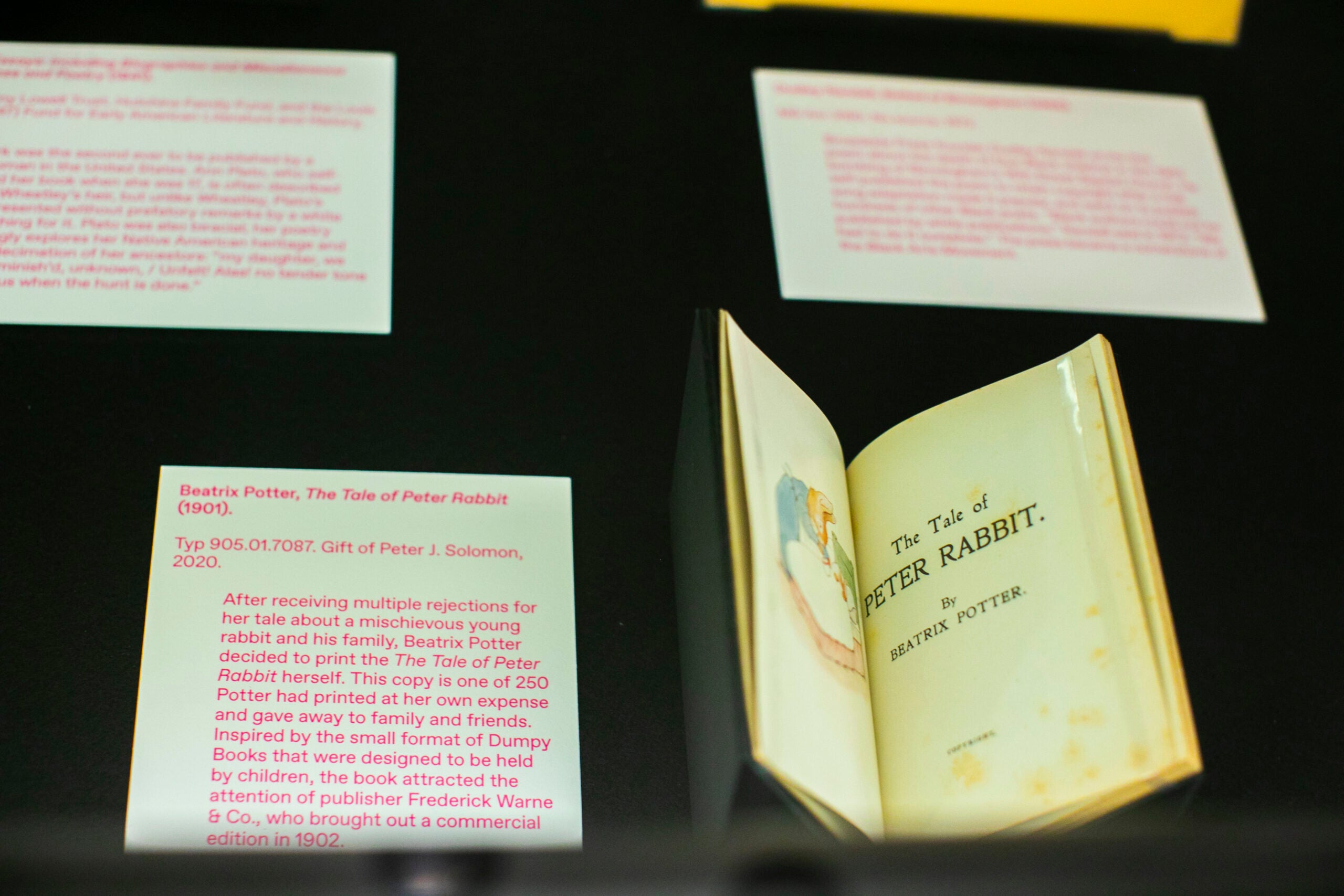
A copy of Beatrix Potter’s “The Tale of Peter Rabbit” illustrates the story of when the author pioneered a new publishing format — a book small enough to be held in a child’s hands.
“Publishers thought this format was not going to be popular. So she was rejected by eight publishers. And then she just got fed up and took it downtown into a jobbing printer and printed 300 copies herself,” Jacobson said.
“Of course, she ran out of copies immediately.”
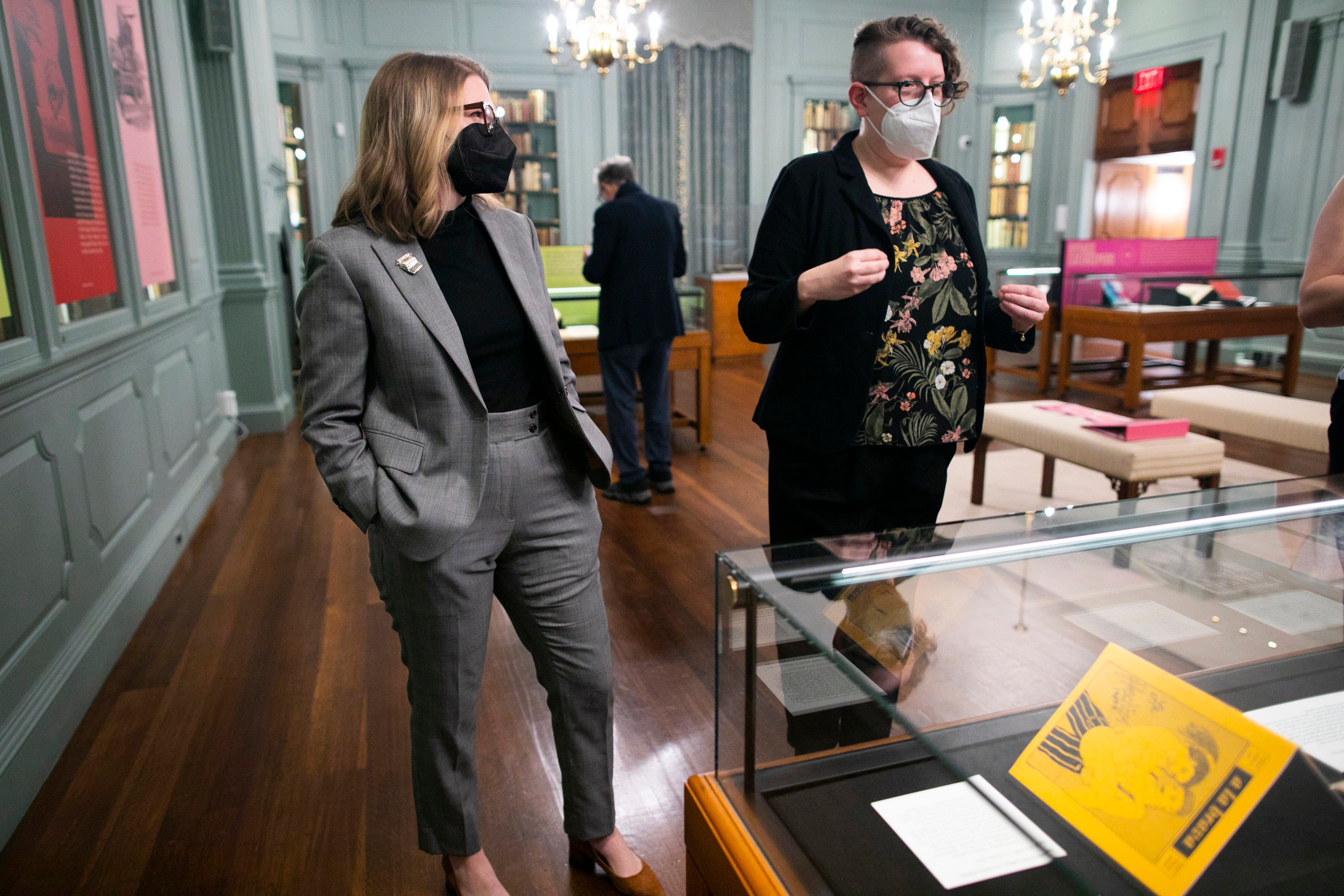
“It’s exciting to see this range of voices and formats in a room together. … It’s a chance to see a lot of people put forth what they wanted to share so badly.”
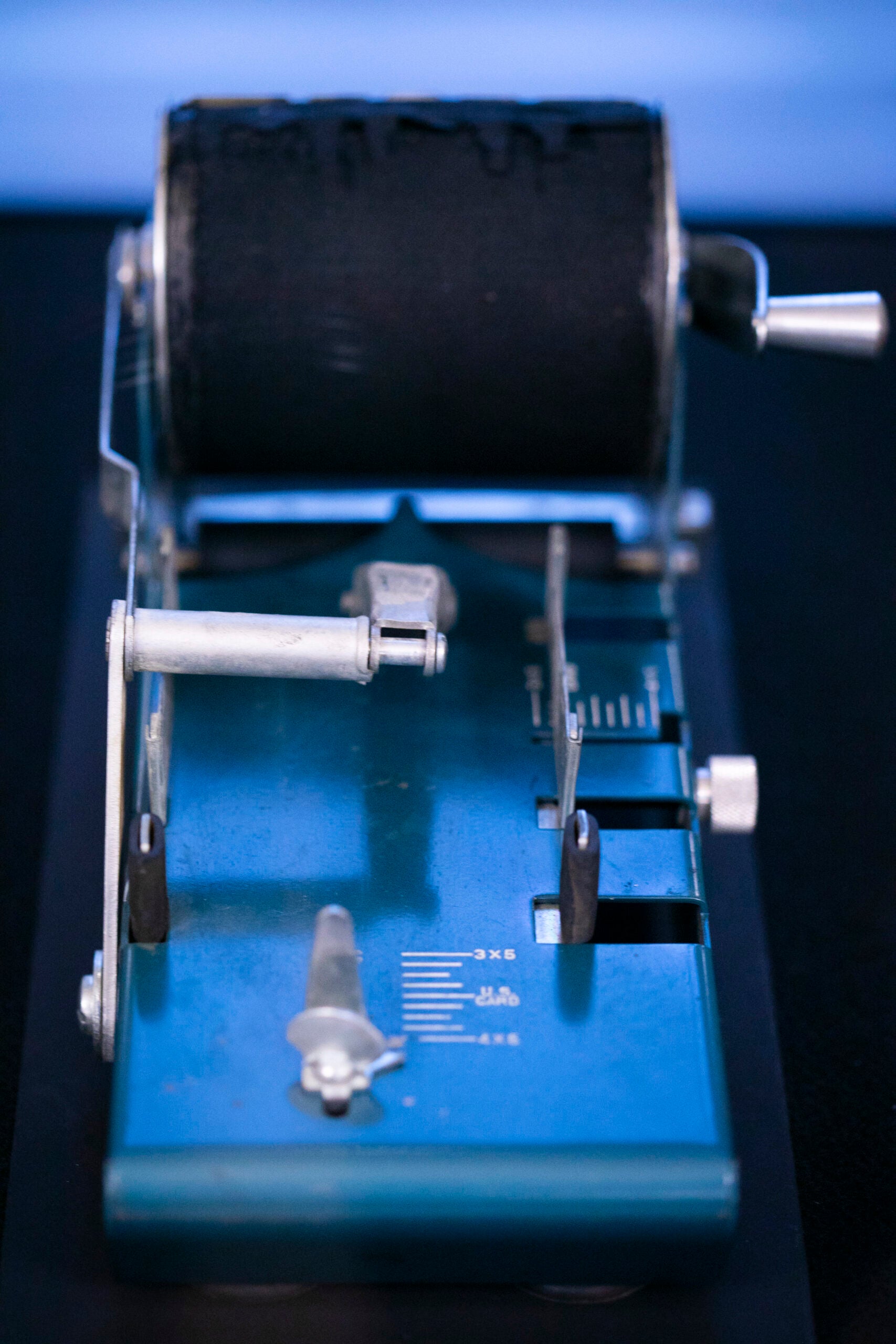
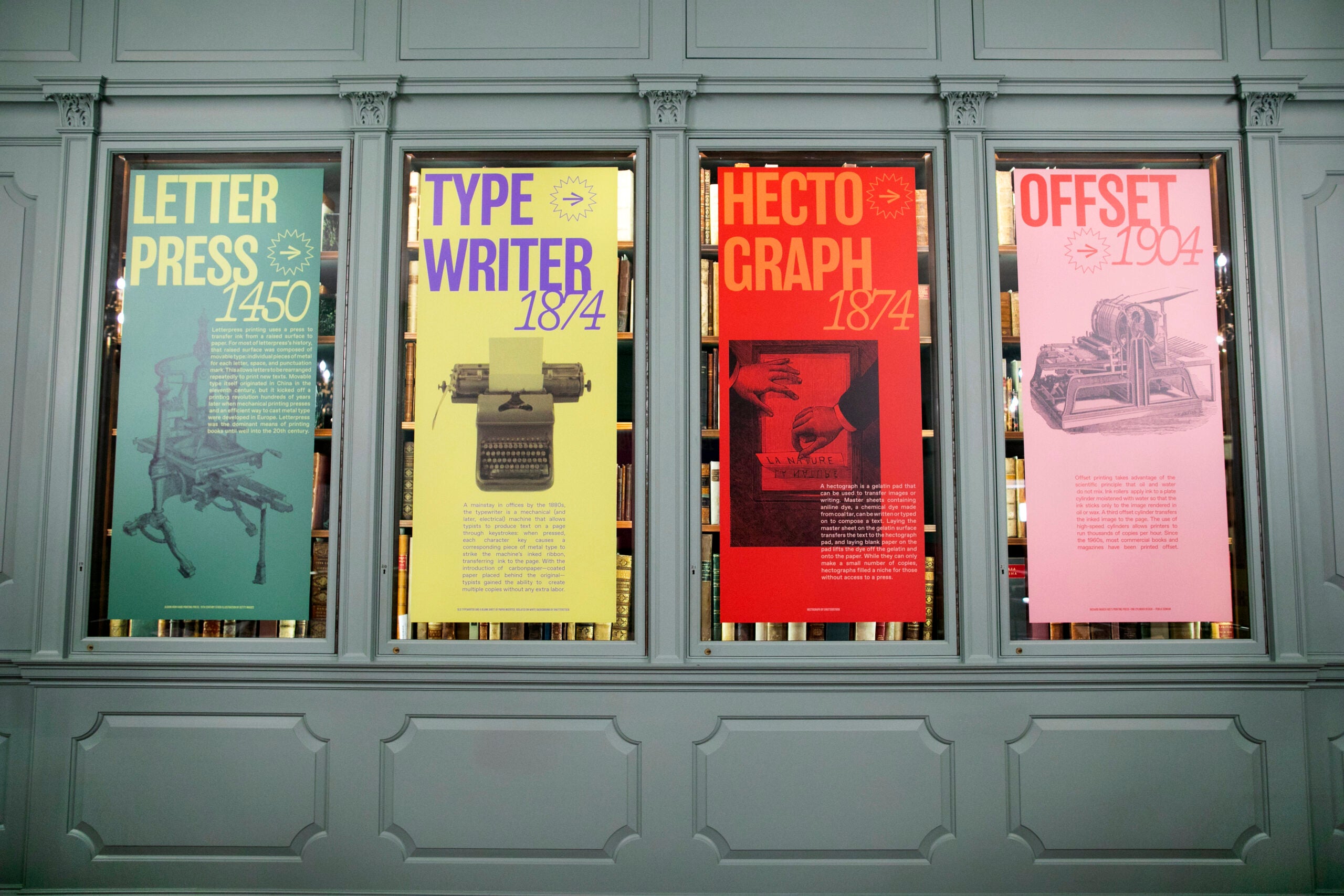
A Print-O-Matic Mimeograph from the 1950s and posters detailing publishing technology through the years.
Bookending the collection is a miniature mimeograph and antique typewriter, and surrounding the prints and books are posters highlighting publishing technology through the years.
Rhode Island School of Design student Zoë Pulley designed the exhibition. Pulley has done similar work with the Boston Center for the Arts, creating a zine of the complete annotated text of the 1977 Combahee River Collective Statement.
“It’s exciting to see this range of voices and formats in a room together,” Greive said. “I like it when people are excited about something — I want to know what they’re excited about, and we see a lot of that in this exhibition. So to me, it’s a chance to see a lot of people put forth what they wanted to share so badly.”
***
Related events
• March 1, 2 p.m.: Table-top Printmaking with Le Huong Huynh
• March 7 and 22, 5:15 p.m.: Jacobson and Greive will lead guided tours
• March 10, 3 p.m.: Zine-Making with Zoe Pulley
• March 28, 1 p.m.: Spirit Duplication with Brian Cassidy
• April 7, 3 p.m.: Pamphlet-Making with Weissman Preservation Center
• April 11, 2 p.m.: Zine-Making with Bridgett Johnson-Pride



